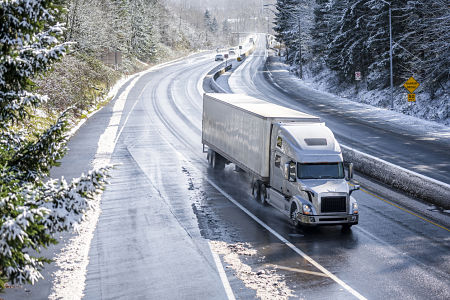Trucking Industry weighs in on National Freight Strategic Plan
Seeking input from the trucking industry on the National Freight Strategic Plan (NFSP), the USDOT in December put out a call for comments in the federal register.
The NFSP, required by the FAST Act, is the federal government’s roadmap for infrastructure planning and enhancing the nation’s freight movements. USDOT sought input from a variety of entities, including trade groups, freight and logistics companies, and state and local governments tasked with planning transportation networks.
The plan will consider how the U.S. improves its national freight transportation system, comprised of more than seven million miles of roadways, rail, waterways and pipelines connected to airports, seaports and intermodal hubs where different modes of transportation converge.
The 82 responses came from a wide range of the freight industry, from trucking associations to state departments of transportation, local planning organizations and port authorities.
ARTBA said the three most important challenges facing the U.S. freight transportation system are inadequate investment, strained capacity and insufficient clarity of purpose.
ARTBA cited the condition of America’s bridges and called for increased investment in transportation infrastructure.
CALTRANS offered the following strategies on freight issues:
- A multimodal vision of how freight can be moved more efficiently in the long-term with less environmental impact is needed.
- Well-planned, corridor based, truck parking facilities with adequate support services can improve safety by minimizing driver fatigue and reducing congestion and hazards in communities and along roadways.
- Strategies should promote both economic development and address negative impacts of the freight system on local communities, particularly low-income neighborhoods and disadvantaged populations.
- Continued long delays at land port of entries may inhibit long-term business growth and investment and may effectively constitute a non-tariff trade barrier.
The Chicago Metropolitan Agency for Planning asked USDOT to emphasize sustainable freight funding and address the negative community impacts of freight.
“The community impact mitigation section of the 2015 draft NFSP should be retained and supplemented with more specific actions steps for U.S. DOT and Congress. The existing section’s recommendation that statutory language be amended to allow eligibility for standalone community impact mitigation projects should be retained. Of importance to the Chicago region is the issue of blocked railroad grade crossings, and the Plan should recommend strategies to quantify this issue and mitigate impacts,” the MAP wrote.
Wisconsin DOT said the most important challenges facing the freight system are safe parking in enough numbers, overall increases in investment to freight facilities and the identification and remediation of current and emerging/potential bottlenecks, especially those with regional or national significance.
Darrin Roth, ATA’s vice president of highway policy, encouraged federal and state lawmakers to make more investments into congested or substandard highways. Roth also asked USDOT to consider a long-term funding source for transportation.
“Long-term, a new revenue source must be identified for funding highway infrastructure. It should be user-based, equitable, enforceable and cost-effective. It should also not discriminate against vehicle classes,” wrote Roth. “Furthermore, the development of new technology represents an opportunity to more cost-effectively address safety and efficiency on the highway system. Governments should facilitate these improvements.
OOIDA President Todd Spencer also weighed in. His letter cited poorly maintained infrastructure as a cause for congestion and cited American Transportation Research Institute (ATRI) estimates that the industry loses $74.5 billion per year due to traffic congestion.
Spencer also asked USDOT to address a shortage in truck parking facilities, suggesting that unused space at truck weigh stations could be converted to truck parking areas.
“Professional drivers regularly report difficulty accessing safe parking for CMVs, especially during times of high demand. Surveys of our members routinely reveal most truckers have been forced to drive beyond the hours-of-service (HOS) regulations simply because they could not find a place to park,” wrote Spencer. “This not only potentially jeopardizes their own safety, but also the well-being of the motoring public with whom they share the road. Truckers are commonly placed in no-win situations where they must decide to park in an unsafe or illegal location – such as a vacant lot – or violate federal HOS regulations by continuing to search for a safer and legal alternative.”






